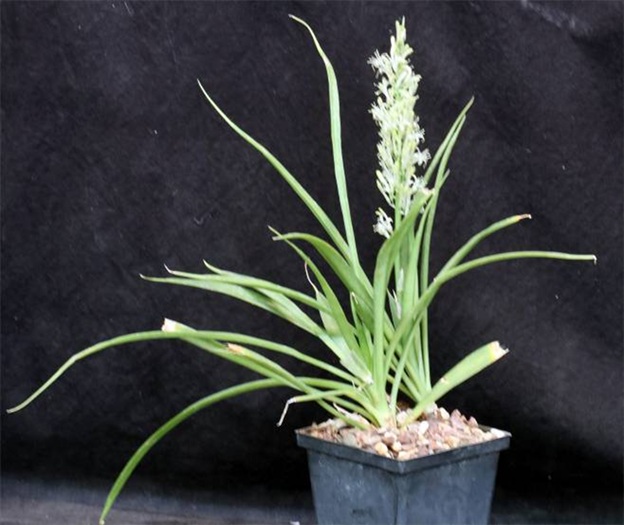| Protologue: |
Repertorium Specierum Novarum Regni Vegetabilis 23: 228 (1927). |
| Subgenus: |
Sansevieria |
| Group: |
not considered a viable species |
| Etymology: |
The epithet means tufted growth form in reference to its grass-like leaves. |
| Distribution: |
Central Namibia. |
| Brief Description: |
There is a great deal of confusion as to what this plant looks like. According to the original description, Sansevieria caespitosa resembled Sansevieria thrysiflora, which now is considered to be part of Sansevieria hyacinthoides. The leaves were supposed to be about 10-20 cm high and dark green, growing from rhizomes to the density of 20 – 30 plants per 2 square-meter stands. The characteristics of the flowers and inflorescence are not given in the protologue. |
| Similar Species: |
How this description justifies merger into Sansevieria aethiopica is seriously questionable because the plants in cultivation bear no resemblance to that species. The plants in cultivation do justify the epithet referring to grass-like leaves, which Sansevieria hyacinthoides (thrysiflora) and S. aethiopica do not have. Additional field work is required to determine if this is a viable species or not. Instead, it bears similarities to the Sansevieria parva - Sansevieria dooneri species of East Africa. Sansevieria caespitosa has narrower leaves than those species from East Africa. These plants cannot be confused with any other species in the genus. |
| |
| |

Sansevieria caespitosa flowering in cultivation.
|

